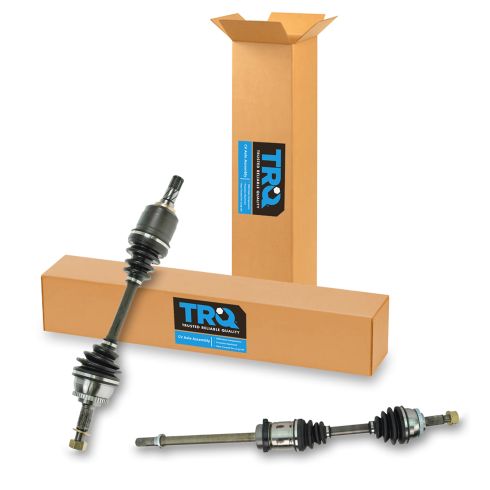1AACS00037-Nissan Maxima Infiniti I30 I35 Front Driver & Passenger Side 2 Piece CV Axle Assembly Set TRQ CSA82472

Replaces
2000 Infiniti I30 excluding Limited Slip Differential Front Driver & Passenger Side 2 Piece CV Axle Assembly Set TRQ CSA82472

Product Reviews
Loading reviews
4.75/ 5.0
8
8 reviews
Work very well
June 21, 2017
Easy to install, video was extremely helpful! Will be back when other problems arise!
CV axle shaft
May 28, 2018
I had purchased remanufactured A1Cardone CV axle shafts to replace my worn out original parts for my 2002 Infiniti I35. After installing them, both left and right remanufactured axles had a terrible vibration, a problem that did not occur with my 16 year old worn out original parts. Mine were clicking when turning. I ended up replacing the A1 Cardone parts after only a week of driving with the 1AAuto brand new, not remanufactured cv axle shafts. The vibration is gone. My 16 year old car now drives smoothly once again.
Great
April 8, 2019
I ended up not needing these parts but the shipping was fast and correct. I made the mistake of ordering the wrong parts but it was my fault and not 1 A auto's. I will purchase from again.
Great so far
October 16, 2019
So far so good!!!
November 7, 2019
I already had these installed. I am now experiencing a low-speed vibration. I am not sure if it is due to this or something else.
Nissan maxima Cv axle
October 28, 2020
Awesome cv axle direct replacement works as oem and both driver and passenger side came brand new. I would recommend 100%
April 2, 2023
Working great! Easy install in an hour or so in my warm garage
Good product
February 25, 2024
Was exactly what the description described and was packaged well, unfortunately I needed the axles for the manual transmission
Customer Q&A
Do these fit a manual transmission?
March 14, 2019
10
This part is specific to vehicles with a particular set of options. We will need more information about your vehicle to confirm the fit.
March 15, 2019
Emma F
Will this fit a 2002 Maxima SE with Manual transmission?
January 4, 2020
10
Thanks for your inquiry. This is not listed to fit vehicles with a manual transmission. We do not have the correct part for your vehicle at this time.
January 4, 2020
Peter L
do you have axles that are compatible with limited slip diff maximas?
January 11, 2021
10
This part is specific to vehicles with a particular set of options. We will need more information about your vehicle to confirm the fit.
The information we will need in order to assist you is:
January 11, 2021
Corey M
Infiniti is a registered trademark of Nissan Motor Co., Ltd. 1A Auto is not affiliated with or sponsored by Infiniti or Nissan Motor Co., Ltd.
See all trademarks.











